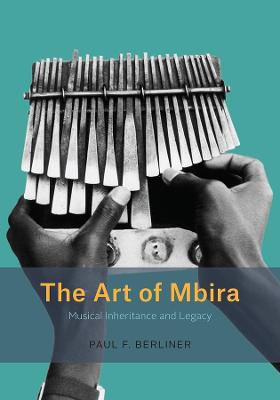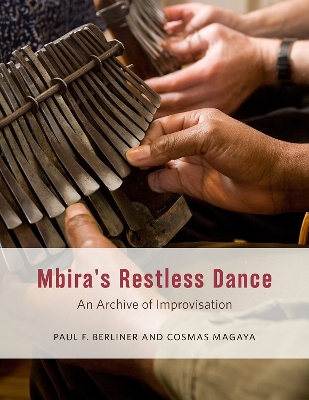Chicago Studies in Ethnomusicology
3 total works
This text reveals how musicians, both individually and collectively, learn to improvise. It aims to illuminate the distinctive creative processes that comprise improvisation. Chronicling leading musicians from their first encounters with jazz to the development of a unique improvisatory voice, Paul Berliner demonstrates that a lifetime of preparation lies behind the skilled improviser's every note. Berliner's integration of data concerning musical development, the rigorous practice and thought artists devote to jazz outside performance, and the complexities of composing in the moment leads to a new understanding of jazz improvisation as a language, an aesthetic and a tradition. The product of more than 15 years of immersion in the jazz world, "Thinking in Jazz" combines participant observation with detailed musicological analysis, the author's own experience as a jazz trumpeter, interpretations of published material by scholars and performers, and, above all, original data from interviews with more than 50 professional musicians.
Together, the interviews provide insight into the production of jazz by great artists like Betty Carter, Miles Davis, Dizzy Gillespie, Coleman Hawkins and Charlie Parker. "Thinking in Jazz" features musical examples from the 1920s to the present, including transcriptions (keyed to commercial recordings) of collective improvisations by Miles Davis's and John Coltrane's groups.
Together, the interviews provide insight into the production of jazz by great artists like Betty Carter, Miles Davis, Dizzy Gillespie, Coleman Hawkins and Charlie Parker. "Thinking in Jazz" features musical examples from the 1920s to the present, including transcriptions (keyed to commercial recordings) of collective improvisations by Miles Davis's and John Coltrane's groups.
Growing out of the collaborative research of an American ethnomusicologist and Zimbabwean musician, Paul F. Berliner's The Art of Mbira documents the repertory for a keyboard instrument known generally as mbira. At the heart of this work lies the analysis of the improvisatory processes that propel mbira music's magnificent creativity.
In this book, Berliner provides insight into the communities of study, performance, and worship that surround mbira. He chronicles how master player Costas Magaya and his associates have developed their repertory and practices over more than four decades, shaped by musical interaction, social and political dynamics in Zimbabwe, and the global economy of the music industry. At once a detailed exposition of the music's forms and practices, it is also an indispensable historical and cultural guide to mbira in a changing world.
Together with Berliner and Magaya's compendium of mbira compositions, Mbira's Restless Dance, The Art of Mbira breaks new ground in the depth and specificity of its exploration of an African musical tradition, and in the entwining of the authors' collaborative voices. It is a testament to the powerful relationship between music and social life--and the rewards of lifelong musical study, performance, and friendship.
In this book, Berliner provides insight into the communities of study, performance, and worship that surround mbira. He chronicles how master player Costas Magaya and his associates have developed their repertory and practices over more than four decades, shaped by musical interaction, social and political dynamics in Zimbabwe, and the global economy of the music industry. At once a detailed exposition of the music's forms and practices, it is also an indispensable historical and cultural guide to mbira in a changing world.
Together with Berliner and Magaya's compendium of mbira compositions, Mbira's Restless Dance, The Art of Mbira breaks new ground in the depth and specificity of its exploration of an African musical tradition, and in the entwining of the authors' collaborative voices. It is a testament to the powerful relationship between music and social life--and the rewards of lifelong musical study, performance, and friendship.
Growing out of the collaborative research of an American ethnomusicologist and Zimbabwean musician, Paul F. Berliner and Cosmas Magaya's Mbira's Restless Dance documents the repertory for a keyboard instrument known generally as mbira. At the heart of this work lies the analysis of the improvisatory processes that propel mbira music's magnificent creativity.
Mbira's Restless Dance is written to be played. This two-volume, spiral-bound set features musical transcriptions of thirty-nine compositions and variations, annotated with the master player's advice on technique and performance, his notes and observations, and commentary by Berliner. Enhanced with extensive website audiovisuals, Mbira's Restless Dance is in effect a series of masterclasses with Magaya, suitable for experienced mbira players and those learning the fundamentals.
Together with Berliner's The Art of Mbira, in which he provides an indispensable historical and cultural guide to mbira in a changing world, Mbira's Restless Dance breaks new ground in the depth and specificity of its exploration of an African musical tradition, and in the entwining of the authors' collaborative voices. It is a testament to the powerful relationship between music and social life-and the rewards of lifelong musical study, performance, and friendship.
Mbira's Restless Dance is written to be played. This two-volume, spiral-bound set features musical transcriptions of thirty-nine compositions and variations, annotated with the master player's advice on technique and performance, his notes and observations, and commentary by Berliner. Enhanced with extensive website audiovisuals, Mbira's Restless Dance is in effect a series of masterclasses with Magaya, suitable for experienced mbira players and those learning the fundamentals.
Together with Berliner's The Art of Mbira, in which he provides an indispensable historical and cultural guide to mbira in a changing world, Mbira's Restless Dance breaks new ground in the depth and specificity of its exploration of an African musical tradition, and in the entwining of the authors' collaborative voices. It is a testament to the powerful relationship between music and social life-and the rewards of lifelong musical study, performance, and friendship.


